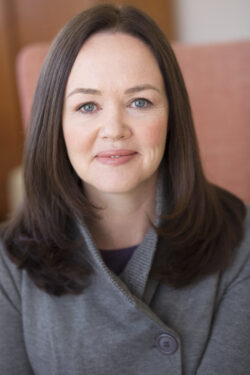To start – a personal story.
As a young child (2-3 yrs old), I often wore rubber bands or elastic bands tight around my wrist. I was also constantly twiddling my hair (and still do to this day!). It felt good and helped me feel calmer in my body and in my mind. I was very, very shy and anxious, to the point that I was extremely quiet in group settings from through preschool all the way through early high school. I also ‘stimmed’, a word used in the neurodivergent community to describe self-stimulation, although I didn’t know that’s what it was then. I would flex and stretch the muscles in my arms, hands and face, which would help me feel calmer if I had an excess of energy, which could be stress or excitement. However, I looked pretty odd when I was doing it, and I soon learned that it was something to be done in private (more on that later).
I grew up in Australia. My mom knew I was struggling in my preschool setting, and when I was three, she took me to a child psychologist (which was really before this was a thing!) who told her that I would always be ‘sensitive’. While the psychologist was right about that, the ways I was sensitive, why that was, or what that actually meant about my strengths and capacities was left ambiguous. I don’t think being sensitive was thought of as a good thing, in fact, no mention was made of any of my strengths and capacities. For my mother, this left her with the very worrisome idea that she had a child who would always be a little fragile in some way. Being ‘sensitive’ didn’t help her understand that I had the capacity to excel academically, to be resilient and empathic. It also didn’t help her predict my love of theater, my love of traveling, my ability to form meaningful relationships with friends, get married, have children, get a PhD, etc. What would have been so much more helpful was her understanding that I was neurodivergent and being given some education related to how to support a young, neurodivergent girl who may feel anxious in larger settings, who may need opportunities to regulate in quieter spaces, while also understanding that I had enormous capacities, and that having a different neurotype doesn’t mean that I couldn’t live a rich, meaningful life.
As I write this, forty-eight years later, it isn’t that much of a surprise to me that we as a team have created, a neurodivergent affirming practice for children, adolescents and their families. However, 48 years later, in Los Angeles, a thoroughly modern city with many more resources than the big country town I grew up in, neurodivergence is still very much misunderstood and stigmatized in our extremely able-ist world. I see this every day as schools and other systems which are supposed to support kids find ways to dis-include those with neurotype differences, which does a great damage to the mental health and long-term wellbeing of neurodiverse families and particularly the neurodivergent children, teens and young adults who have to live in a world designed for people who are of what we call a neurotypical neurotype. Thank goodness the neurodivergent community, through organizations such as The Society for Neurodiversity and also through psychologists such as Debra Brause (follow her on Instagram and on Psychology Today) have been able to educate the general population and advocate for the experiences. strengths and capacities of its neurodivergent members.

Understanding Neurodiversity
Neurotypical describes individuals who think and process information in ways “typical” for their culture.
Neurodivergent refers to individuals whose brain functioning differs from what is considered “typical.” This encompasses people with a range of differences including:
Sensory Processing Disorder
Autism Spectrum Disorder
Attention/Deficit-Hyperactivity Disorder
Dyslexia
Tourette’s
Dyspraxia
Anxiety
OCD
Other neurological conditions
Of course, any diagnosis, and particularly one that includes the word ‘disorder’, inherently sets us up to think that there is something very wrong with ourselves and our children. What if, instead, we could think of not disorder but ‘difference’, and be more curious, understanding and actively supportive to design environments that provide sensory support, to understand the need for sensory breaks and different approaches to learning?
A Neurodiversity Affirming Approach
In contrast to a deficits-based approach which focuses on “fixing” the impairments associated with neurodevelopmental conditions, a neurodiversity-affirming approach acknowledges that all neurotypes have unique strengths, interests, and support needs. Moreover, this approach highlights the role of the environment and societal barriers in further exacerbating challenges faced by neurodivergent individuals.
Traditional therapeutic approaches to working with neurodivergent individuals have focused on encouraging individuals to mask neurodivergent traits such as reducing stimming behaviors or forcing eye contact and mimicking neurotypical styles of communication. However, emerging evidence suggests that these practices can lead to shame, anxiety, depression, and reduced self-worth (Sedgewick et al., 2021). Rather than perpetuating the idea that neurodivergent individuals need to mask certain characteristics, neurodiversity-affirming practice seeks to understand and inform individuals about differences and provide adaptations and supports that affirm neurodivergent identities. Subsequently, this can lead to self-advocacy regarding accommodations within the classroom or workplace and help cultivate a sense of self-esteem.
So, what does this look like in therapeutic practice?
Understanding Neurodiversity-Affirming Therapy:
The goal of neuro-affirming therapy is to embrace the uniqueness and strengths of neurodivergent children and provide them and their families with the skills, tools, and strategies to allow for improved participation within the home, school, and play environments.
This may involve:
Seeking to understand the needs of neurodivergent children from their perspective and
adapting the environment to meet these needs.
Understanding and respecting neurodivergent communication styles.
Understanding and accommodating individual sensory needs.
Encouraging neurodivergent rather than neurotypical listening skills.
Assisting in developing self-advocacy and problem-solving skills.
Teaching children to better understand the emotions, behaviors, and communication of
other people around them, so they can better choose how they want to respond.
Validating children’s feelings, helping them recognize their triggers, and assisting in
identifying calming strategies.
Recognizing the need for processing time and safe spaces.
Encouraging safe self-regulation skills, including stimming.
Adopting neurodiversity affirming language
Neurodiversity affirming therapy does not involve:
Promoting masking, loss of autonomy, or loss of personal agency.
Eliminating stimming behaviours.
Developing goals that seek to “cure” neurodivergent behaviors.
Dr. Wendy Denham, PhD is a clinical psychologist with twenty years’ experience teaching skills that help children, adults, and even organizations improve their reflective capacities and achieve their goals. Because every person and situation is different, Dr. Denham works with people in a variety of ways: through ongoing therapy, coaching, and mentoring, both in-person and via technology.

